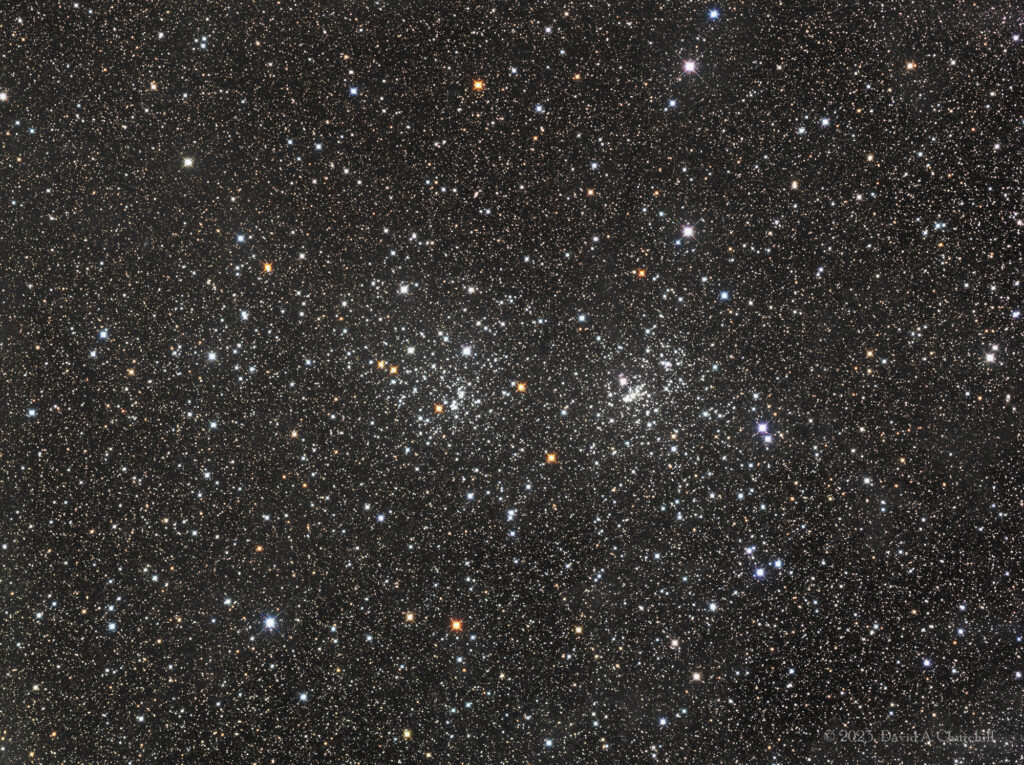NGC 869 & NGC 884
Double Cluster. Open Clusters. Perseus
- Description
- Technical
- Links
NGC 869 is an open cluster located 7460 light years away in the constellation of Perseus. The cluster is about 14 million years old. It is the westernmost of the Double Cluster with NGC 884. NGC 869 and 884 are often designated h and χ (chi) Persei, respectively. Some confusion surrounds what Bayer intended by these designations. It is sometimes claimed that Bayer did not resolve the pair into two patches of nebulosity, and that χ refers to the Double Cluster and h to a nearby star. Bayer’s Uranometria chart for Perseus does not show them as nebulous objects, but his chart for Cassiopeia does, and they are described as Nebulosa Duplex in Schiller’s Coelum Stellatum Christianum, which was assembled with Bayer’s help. The clusters are both located in the Perseus OB1 association, a few hundred light years apart from each other. The clusters were first recorded by Hipparchus, thus have been known since antiquity.
The Double Cluster is often photographed and observed with small telescopes. The clusters are visible with the unaided eye between the constellations of Perseus and Cassiopeia as a brighter patch in the winter Milky Way. In small telescopes the cluster appears as an assemblage of bright stars located in a rich star field. Dominated by bright blue stars, the cluster also hosts a few orange stars.
The Double Cluster is often photographed and observed with small telescopes. The clusters are visible with the unaided eye between the constellations of Perseus and Cassiopeia as a brighter patch in the winter Milky Way. In small telescopes the cluster appears as an assemblage of bright stars located in a rich star field. Dominated by bright blue stars, the cluster also hosts a few orange stars.
Telescope: Planewave Delta Rho 350 f3.0
Mount: Astro Physics 3600GTO “El Capitan”
Camera: ZWO ASI461MM pro / EFW-7
Guider: ZWO OAG-L-68 / ZWO ASI174mm Mini
Filters: Astrodon II 50mm Sq LRGB
L: 20×5 mins = 100 mins, R: 12×5 mins = 60 mins, G: 12×5 mins = 60 mins, B: 12×5 mins = 60 mins
Total Imaging Time: 4h 40m
Data Imaged remotely over 6 nights during September & October 2023.
Data acquisition & Processing by David Churchill.
None

